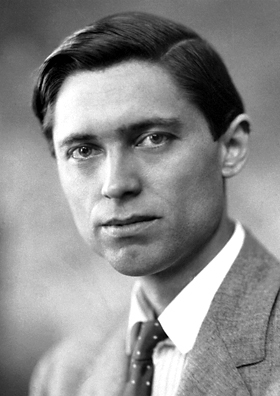Theodor Svedberg (nonfiction)
Theodor ("The") Svedberg (30 August 1884 – 25 February 1971) was a Swedish chemist and Nobel laureate, active at Uppsala University.
Theodor Svedberg was born in Gävleborg, Sweden. He was the son of Augusta Alstermark and Elias Svedberg. He earned his Bachelor of Arts degree in 1905, his master's degree in 1907, and in 1908, he earned his Ph.D.
Svedberg's work with colloids supported the theories of Brownian motion put forward by Albert Einstein and the Polish geophysicist Marian Smoluchowski.
Svedberg developed the technique of analytical ultracentrifugation, demonstrating its utility in distinguishing pure proteins one from another.
He was awarded the 1926 Nobel Prize in Chemistry for his research on colloids and proteins using the ultracentrifuge.
The unit svedberg (symbol S), a unit of time amounting to 10−13 s or 100 fs, is named after him.
In the News
Fiction cross-reference
Nonfiction cross-reference
External links:
- Theodor Svedberg @ Wikipedia
